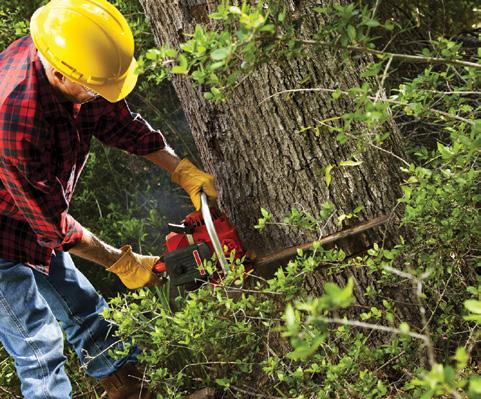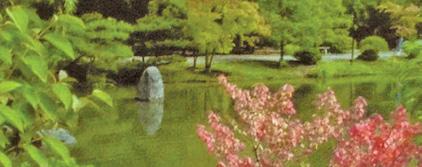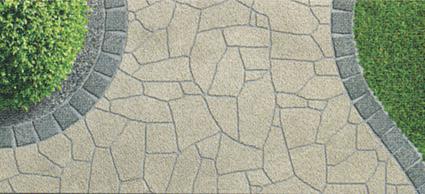




























Mike Soares spent most of his professional life building things. A veteran in the construction trade, Soares took a career turn in the early 2000s by stumbling, or diving, into a happy “accident.”
“I built my own pool,” Soares said. “We purchased a home in Oakley, and I didn’t know what to do with the backyard. My cousin was a designer for a pool company up north, so he came down and drew up a pool and he goes, ‘Oh, these are a piece of cake for you, you’ll be able to do it.’”
“So, I did. I built my own pool, and we were in a new neighborhood and I helped a few others. Then it was just a great way to make a living and very enjoyable, so we were creating a lifestyle and it went from there.”
That happy “accident” turned into Diablo Pools, which has built pools for customers around Northern California, mostly throughout East Contra Costa County, for more than 20 years.
Every pool that Soares has built, including the one for himself, has a story to it. For Soares, building his own pool in his backyard got him started in the business that he’s in now. For some others, it represents
a way to create memories and ways for families to spend time together.
“The (story) that always comes to mind is a pool I did for a friend and the dad paid for the pool,” Soares said. “He did it because he wanted to enjoy the time with his grandsons.”
Diablo Pools in Brentwood specializes in premium, custom pool designs and construction. The more than two decades worth of iron-working experience from Soares, along with the advancement in construction technology and planning, has opened the way for Diablo Pools to soar.

First, they brainstorm and meet with
More than just a place to swim, Diablo Pools transforms space into a sanctuary.
“We used to do everything on pen and paper, do it by hand,” Soares said. “To do it by hand with the computer software that is out there like this, for every detail it makes it much easier. The hard part was getting used to the computer programs.”
Gabriel Graham, a Brentwood resident and a recent customer of Diablo Pools, benefited from the company’s modern approach to pool construction.
“We’re still talking about how much we love it,” Graham said. “We love the way it looks at night and during the day, so we can’t wait to have people over to look at it.”
Graham, who is renovating his house, had the pool installed about a month ago.
the customer to see what they really want before diving into the design process. Then, using 3D rendering technology, they design the pool precisely to the customer’s specifications before the shovel digs into the ground to make sure it’s exactly to the customer’s request.
When it’s time to build, Diablo Pools uses some of the top materials and current techniques to build the pool. The process has come a long way since the days of paper blueprints and having everything drawn out, although it may not have been the easiest transition from the old-school way of pen and paper.
“We’ve never been through a pool building project before,” Graham said. “It was really amazing to see it come together with all of the steps involved. There were a lot of parts of the process that we weren’t aware of and the amount of attention that would go into detail, and we’re very satisfied.”
“Diablo was great to work with, they were very responsive in the beginning and we collaborated together on the design and putting it all together was a very successful collaboration.”
If you’re looking to install a new pool in your backyard, you can contact them at DiabloPools.net, on their Facebook page at https://www.facebook.com/people/DiabloPools or by calling 925-625-1516.

✔ CONSTRUCTION
Bathroom and kitchen remodel? We can handle it from start to finish!

✔ PLUMBING
Faucet, sink, toilet or drain problems? No problem!
✔
ELECTRICAL

Need additional outlets, ceiling fans, sconces or recessed lighting? We do that, too!
✔ PAINTING
Interior, exterior, fence or other structure that needs painting? We’ve got you covered!
✔ MAINTENANCE
Gutter cleaning, pressure washing, fence repair, landscaping, hauling? We’ve got you covered!

Home improvement trends come and go, and one trend that has become wildly popular in recent years is recognizable in yards every night. Landscape lighting has transformed how people see and enjoy their properties at night, making it one of the more sought-after upgrades among modern homeowners.
Curb appeal is often seen through the lens of how homes appear during daylight hours, but landscape lighting can make homes look better and more modern, and potentially safer, after the sun goes down. With such potential, landscape lighting is worth exploring for homeowners looking to upgrade their properties.
When considering landscape lighting, homeowners should know that there are various options to consider. According to the lighting experts at Lumens, spotlights project a concentrated and narrow beam of light that’s usually around 45 degrees. Spotlights are often chosen to highlight specific features on a property, like a component of
the landscaping. Individuals who want to cast light over wider, more general areas may consider floodlights, which Lumens notes spread light up to 120 degrees.
Inground lighting is among the more sophisticated landscape lighting options. Lumens notes that inground lighting illuminates the whole of a tree or structure, often creating a dramatic look. These circle-shaped lights also are great at illuminating walkways and driveways.
Post lights are another outdoor lighting option, and these are often used to light up long walkways and pathways so
it’s easier and safer to navigate dark areas at night.

Many homeowners consider a do-ityourself approach when pondering a potential home renovation, and a landscape lighting project is likely to inspire such curiosity as well. The home experts at HGTV note that the feasibility of DIY in regard to a landscape lighting project depends on the type of lighting homeowners want to install and where they want to install
it. Replacing an existing electrical fixture may be well within the skill of a seasoned DIYer, but installing a new fixture is a job best left to the professionals. Homeowners whose homes currently have no or very little landscape lighting are almost certainly better off working with a professional. Solar lighting that does not require any electrical work can be installed quickly and easily by anyone, but such options may not provide the look homeowners are aiming for.
The amount of lighting homeowners want to install is up to them. If the home currently has little or no landscape lighting, a consultation with a professional can help to determine how much lighting to install and where to install it. When discussing landscape lighting, homeowners may want to inquire about dimmers. Dimmers can increase or decrease lighting depending on the situation. For example, homeowners may want a little extra light during a party, but less when relaxing alone outside at night. Dimmers allow homeowners to adjust as necessary.
Homeowners considering adding landscape lighting to their property are urged to work with a skilled professional to devise and install a set-up that makes their homes more appealing at night.
– Courtesy of Metro Creative





Gardening is a rewarding hobby that can pay a host of dividends, both for the planet and the people doing the gardening. Healthy plant life can help clean the air by absorbing carbon dioxide and various air pollutants, while the act of gardening can help gardeners combat stress.

Published in 2011 in the Journal of Health Psychology, a study from researchers in the Netherlands found that gardening promotes relief from acute stress. In the study, two groups of participants were asked to complete a stressful task and then instructed to either read indoors or garden outdoors for 30 minutes. After 30 minutes, the latter group had lower levels of the stress hormone cortisol and even reported being in a better mood than the group instructed to read indoors.
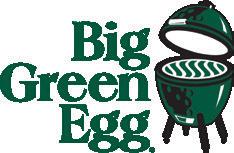

But gardening does more than just provide gardeners with a reason to spend some time relaxing outdoors in an effort to relieve stress. Gardeners who raise certain plants may be able to bring those benefits with them when going inside as well. According to an article published in the journal Environmental Health Perspectives
in October 2011, houseplants can work wonders when it comes to improving overall health, removing toxins from air, soil and water by metabolizing some toxic chemicals and releasing harmless byproducts while sequestering such toxins by incorporating them into plant tissues.
Clean indoor air is important for everyone, but especially so for those people who suffer from respiratory ailments like asthma. In fact, the American Academy of Allergy, Asthma and Immunology considers indoor air filtration an essential part of any strategy to improve respiratory health. But filtration systems and air purifiers are often not enough, and those who want the air in their homes to be as clean as possible may benefit from introducing certain houseplants into their homes. The following are a handful of plants that can help to improve indoor air quality.
♦ Aloe vera: Aloe vera might be most often associated with hand creams and hand soaps. But the aloe vera plant, a succulent that even novice gardeners should have no problem growing, can clear indoor air of formaldehyde and benzene, two common byproducts of chemical-based cleaners many people use in their homes.
♦ Spider plant: Spider plants are resilient, and that makes them great houseplants for busy men and women who tend to be forgetful when caring for their plants. In addition, spider plants are pet-friendly and can
be used to combat benzene, carbon dioxide, formaldehyde and xylene.









♦ English ivy: NASA researchers exploring the possibilities of long-term space habitation found that certain houseplants were more effective at cleaning air inside energy-efficient, non-ventilated buildings than others. One such plant was English ivy, which can effectively combat the formaldehyde found in certain household cleaning products.
♦ Bamboo palm: Bamboo palms also found their way onto NASA’s list. Bamboo palm plants thrive indoors, where they are especially effective at filtering out the chemicals benzene and trichloroethylene.
– Courtesy of Metro Creative

Every year, the months of March and April traditionally represent the time when the cold, rainy winter season transitions into the warmer, blossoming spring season.

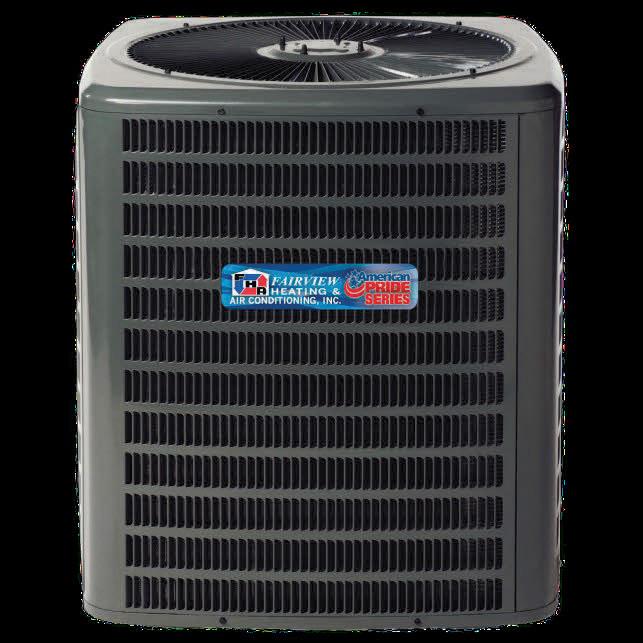

As the mostly sunny weather returns, the aroma of the combination of blooming flowers and fresh-cut grass along with trees sprouting new leaves and plants awakening from their dormant state symbolizes the kickoff of the annual gardening season.

However, Northern California is coming out of its wettest winter season in years. The state has received more than 78 trillion gallons of water during the last several months of rainfall, more than 150% of the average rainfall California normally receives, and a statewide average of 27.6 inches of water, according to the National Weather Service. Consequently, the prolonged wetter winter has delayed the start of the spring gardening season, as the rain and uncharacteristically cool weather have prevented gardeners from heading out to restart, add, or maintain
their yards and gardens.
“While we love the fact that all this rain helps us get out of the drought, being a landscaper dealing with this unpredictable weather has been a pain,” said Greg Horton, owner of Complete Landscape

of Oakley. “Luckily, all of our clients have been understanding for any delays and our scheduling hasn’t been too adversely affected.”




Meanwhile, officials from retail stores like Home Depot say while the recent




rainy weather has affected garden sales, the prediction is that since the worst of the storms is over, the gardening season is primed to take off once the weather begins to warm up. The upcoming weeks and weekends are projected to be the busiest for the gardening season.
The added caveat is that due to the severity of storms in some regions, it has necessitated some repair and additional maintenance work that will also bring out shoppers. March is traditionally the time of the year when sales begin to heat up, according to Todd Gonzales, a former operations and merchandising manager for Home Depot. This increases the need for seasonal employees to handle the heavy influx of garden product sales, which traditionally lasts through the end of July.
“The rainy season definitely impacts sales,” said Gonzales, who worked with Home Depot for eight years. “Shoppers are fair weather. When the sun is out, people are out enjoying the day and shopping at a nice garden center. You will still get some traffic – however much, much less.”

The abundance of rain and ensuing eventual melting of the snowpack has allowed the state of California to lift many of the drought restrictions that have handicapped much of the state during

the past several years. Data graphs from the U.S. Drought Monitor show that only 2 percent of California is still in “severe” drought, compared to 44 percent this past January, and 41 percent experiencing “extreme” drought just a year ago. The recent drought conditions have led to the increasing popularity of succulents, which are easy to grow, are low maintenance, and require less water.
The heavy rain and reduced drought restrictions may allow for plant and garden enthusiasts to rejoice somewhat this season, though water conservation is still highly encouraged.

“The last seven years we have been in business, we may have only been rained out a couple times a year, but this year it has been over two weeks’ worth,” said Horton. “Also, with the large amount of water, it has saturated the ground so much it delayed some hardscaping projects as the ground is too soft to properly install new materials. The one good thing is the ground is really soft when it comes to digging the holes for all the plants, as digging in the hard ground has been a lot more work.”
According to home improvement website The Spruce, gardeners are advised to plant warm-season plants, add fertilizer to perennials, and add mulch around trees and shrubs. Additionally, the website urges shoppers to prioritize use of mulch, topsoil, fertilizers including weed and feed; lawn fertilizer with herbicide that helps feed

Sod
lawns and controls weeds, irrigation and drip systems, along with pavers and garden wall blocks.

Going into the spring season, shoppers and garden enthusiasts are advised and encouraged to seek out help and ask questions at local nurseries or at retail places like Home Depot or Lowe’s, where knowledgeable associates can educate shoppers on how they can beautify or expand their gardens.




“Fertilize your lawn with slow-release fertilizer, and do not overfertilize,” advised local garden expert Francisco Vega. “Start using mulch around your trees and shrubs, and after all the rain and weeds, weed killer such as RoundUp is another popular item right now that kills weeds in unwanted areas.”

Gonzales noted that one of the highlights of the kickoff of every garden season is driving by any garden center or nursery and seeing walls of mulch and garden soil for sale. He further encouraged shoppers to plan, measure, and do some research on what they feel could work best in their yard depending on what area they live in.
“Most garden retailers sell what works in the area, and if you don’t know, ask,” said Gonzales. “People that love gardening love to talk about gardening, and are usually very informative. Customers will be out in force and ready to go.”
More spring gardening tips, ideas, and information can be found at https://bit. ly/3MoVyJQ and at https://bit.ly/40Y3SVg

Brentwood residents who have an active garbage account are invited to participate in free Neighborhood Cleanup events on the following dates: April 29, May 6, 13 and 20.
Residents can bring up to two cubic yards (one pickup truck load or a small utility trailer load) of unwanted household items including general yard waste, appliances, furniture, mattresses, metal, computers, TVs and other electronic waste, free of charge, to the Brentwood Transfer Station at 2301 Elkins Way. From Brentwood Boulevard, go east on Sunset Road, then north on Elkins Way. Continue to the end of the road, then turn left.
Online registration for the spring cleanup events is open at www.brentwoodca.gov/cleanup.
Residents must register online by selecting from the pre-scheduled dates and times in order to participate. Registration closes when at full capacity or two days prior to the event date, whichever comes first.
What to bring:
♦ Have your email confirmation, your City of Brentwood utility bill and your identification (driver’s license) available at event check-in.


♦ Wear closed-end shoes. They are required for safety reasons.

♦ Children/pets must remain in cars when materials are dropped off.
What you can drop off
♦ Recycling – When loading separate these items for recycling: appliances, electronic waste, mattresses, metal, clean wood (unpainted, no particle board), cardboard, yard waste and passenger tires only (max. 4 tires).
♦ Remove batteries – They are considered hazardous waste.
Dogs, particularly puppies, can be full of boundless energy. Channeling that energy into exercise with long walks or play sessions can help stem dogs’ propensity to get into trouble around the house as they burn off extra adrenaline. Pets who don’t have an energy outlet may chew off-limits objects or get into other mischief.

According to the American Kennel Club, the amount of exercise a dog needs depends on the animal’s age and breed. For example, border collies or Siberian huskies may require much more exercise than English bulldogs, simply because the former are working breeds. Pet owners with large backyards often find those outdoor spots are ideal for when their dogs get the “zoomies,” something that tends to be a daily occurrence. Letting their dogs run around yards, whether on their own or chasing tossed tennis balls, is an ideal way to provide exercise and tire out pups. In such scenarios, it’s vital that pups have a dog-friendly yard in which to play.





An expanse of grass is the perfect place to frolic or enjoy some sunbathing - for people or pets. But contact with chemically treated lawns can cause a number of health issues for dogs, such as allergies or intestinal upset.
Switching to native grasses can reduce the need to use chemicals to get lush lawns. When supplementation is needed, homeowners can switch to organic products or natural compost as safer alternatives than chemical-based products.

Off-leash running and bounding through the yard will make any dog smile. However, a fence is a must-have to ensure a dog doesn’t become an escape artist. Be sure the fence is high enough so that the pup cannot jump over it. Burying chicken wire in the dirt beneath the lower edge of the fence also can help prevent dogs who like to dig from exiting by crawling underneath the fence.
Consider installing a lock on the fence gate so that no one can wander in and surprise the dog, which may startle the animal and prompt it to defend the property. A lock also helps prevent dog theft.

Maintaining a clean yard also is key to safety. Inspect the yard regularly to make sure nothing is around that can prove harmful, whether it’s poison ivy, felled branches or broken fence panels. Also, keep shrubs and grass trimmed to reduce flea and tick populations on the property.

Certain plants can be dangerous if they’re consumed by curious pups. Chrysanthemums, peonies, irises, and hydrangeas are some plants that can be poisonous. For a full list of poisonous plants, visit the ASPCA website (aspca.org).
Dogs can spend some unattended time in the yard, but check in from time to time. Should wildlife get into the yard, dogs may get hurt by tussles or bites. Birds of prey, such as owls, hawks and even vultures, may attack small dogs in a yard. According to Pat Silvosky, director of the Milford Nature Center in Kansas, some birds can be territorial. While they might not view a dog as an easy meal, they could swoop down and attack to defend territory. The same may occur with other wild animals.
– Courtesy of Metro Creative

A dogfriendly yard may require a little effort to create, but it’s worth a little sweat equity to keep pups safe.Photo by Metro Creative


The team at the 5-time “Best of Brentwood” winning Perfect Star Heating and Air Conditioning were asked for their tips on extending the life of your home’s central heating and cooling system while saving you lots of headaches and money along the way.

1) Changing your Filter: “This is hands down the easiest step in keeping your system running properly all year long,” says Perfect Star Senior Comfort Advisor Chuck Anderson. “We recommend changing your filter every 2-3 months,” says Anderson. Bonus tip: Find out what kind of filter your system uses and stock up on them. Purchasing filters directly from stores like Walmart, Target, or any home improvement store will give you peace of mind while also saving you a lot of money.
2) Annual Seasonal Maintenance: “This is critical in improving performance and preventing breakdowns” says Perfect Star Senior Comfort Advisor Gilbert Caceres. “Scheduling your maintenances before peak usage seasons is important because it prevents breakdowns on hot summer days or cold winter nights, when the systems are working their hardest. On every maintenance call, we ensure that everything is working properly. We test all running parts and make sure all the safety sensors are fully functioning. On top of that, we provide a thorough safety inspection on your furnace and air conditioner.” Tip: Perfect Star offers membership plans for everyone. The
Perfect Star membership allows clients to get their system serviced biannually. Perfect Star Members are contacted seasonally to schedule their maintenances and in addition to that, members receive a 20% discount and earn $100 in Perfect Star Rewards for every year of membership that can be used for repairs or new equipment.
3) Don’t Put Off Repairs: “If your system starts acting irregularly, such as making a weird noise or not working to its fullest capacity, contact an HVAC service technician ASAP,” says Perfect Star Owner Chris Donzelli. “The sooner you address the issue and get it solved, the less chance you have of facing unnecessary long-term damage to your system.”
Bonus Tip: If necessary repairs are beyond your current budget, Perfect Star is happy to announce that they not only have 0% financing available on new home comfort systems but now offer 0% financing available for repairs over $999.


4) Your Thermostat: This one’s super easy! “Changing the batteries in your thermostat once a year, can erase connectivity issues between your thermostat and your HVAC units,” says Anderson. “Also upgrading to a programmable thermostat can take a lot of stress off your plate and allow you to plan out your ideal temperature throughout your morning, afternoon and evening.”
5) Your Indoor Air Quality: “Living in a confined space means that the cleanest home may still be unsanitary. Think about it this way: the average person needs 2 quarts of water a day to survive, but needs 15,000 quarts of air to survive so you must ask yourself ‘Why do people purchase filtered/bottled water yet don’t feel the need to purify and clean their air?’” Donzelli says. “We are proud to be able to offer our clients the Plasma Air, an affordable, safe, and effective whole home air purification system. Plasma Air not only neutralizes and reduces pollen, dust, pet dander, mold spores, smoke and odors, but it has been tested and proven to reduce viruses and bacteria such as the live SARS-CoV-2 virus.” Plus, in addition to keeping your air clean it also helps keep your HVAC system clean!
For more information, please call Perfect Star at 925-255-5527 or visit us at www.PerfectStarHVAC.com.









Spring is a time of year when change is in the air. Trees are budding, plants are flowering, and homes laden with dark or heavy fabrics and clutter could use some lightening up.

Spring cleaning projects are popular this time of year as residents take inventory of their living spaces and aim to declutter, clean and increase efficiency. Some people find the prospect of getting organized overwhelming. Here are some tips that can help anyone master spring cleaning.
♦ Create a plan. Make a checklist and establish a cleaning plan of attack. Focus on areas that are not regularly cleaned, as they probably need a little attention.
♦ Assemble your cleaning kit. Spring cleaning can be slowed down considerably if you don’t have all of your equipment at the ready. Items to have on hand include an all-purpose cleaner, concentrated cleaner, microfiber cloths, paper towels, mop, vacuum, dusters, and a squeegee. Adjust your equipment based on the task at hand.

♦ Curate your cleaning playlist. Find songs that will get you moving and motivated to clean.


♦ Work from top to bottom. Work efficiently by cleaning shelves, ceiling fans and other elevated items first, as dust and debris will trickle down and need to be cleaned next.
♦ Purchase or rent a carpet cleaner. According to the experts at Clean That Up, carpets help filter indoor air by trapping debris and allergens. By deep cleaning carpets, homeowners can improve the indoor air quality of their homes. Use a carpet cleaner on a warm, dry day so that windows can be opened and cross breezes will help dry the damp rug.


♦ Clean windows. Wash windows inside and out and utilize their screens to help brighten indoors spaces.



♦ Deep-clean the kitchen. Clean out and disinfect the refrigerator by wiping it down with warm water and baking soda or a vinegar-and-water solution. While in the kitchen, set the oven to the self-clean function so it becomes cleaner as well.
Homeowners also can focus on cleaning curtains (including shower curtains), steam-cleaning upholstery, removing clutter from closets, cleaning out the dryer vent and duct tubing, wiping inside kitchen drawers, and vacuuming under beds and other furniture.

– Courtesy of Metro Creative

Fertilizing in spring can help a lawn recover from the previous summer and winter, ensuring it’s lush and green when summer entertaining season arrives.


Spring marks the return of lawn and garden season. Lawns often bear the brunt of winter’s wrath, so spring is a great time to nurse them back to health, and fertilizing can be an essential component of that process.

Fertilizing a lawn can be intimidating. An array of fertilizers, with each seemingly designed to address a different issue, can make homeowners’ heads spin when visiting their local lawn and garden center. However, fertilizing is a very simple task that any homeowner can tackle. Fears about fertilizing are often unfounded and


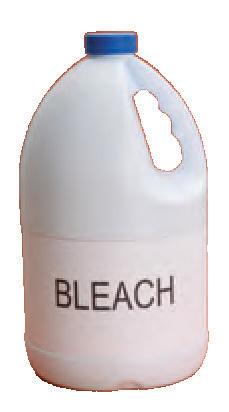






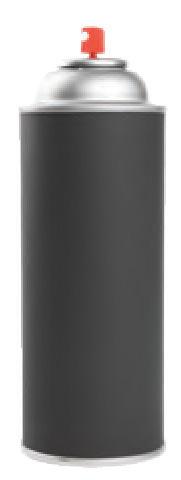






see Lawn page 12B
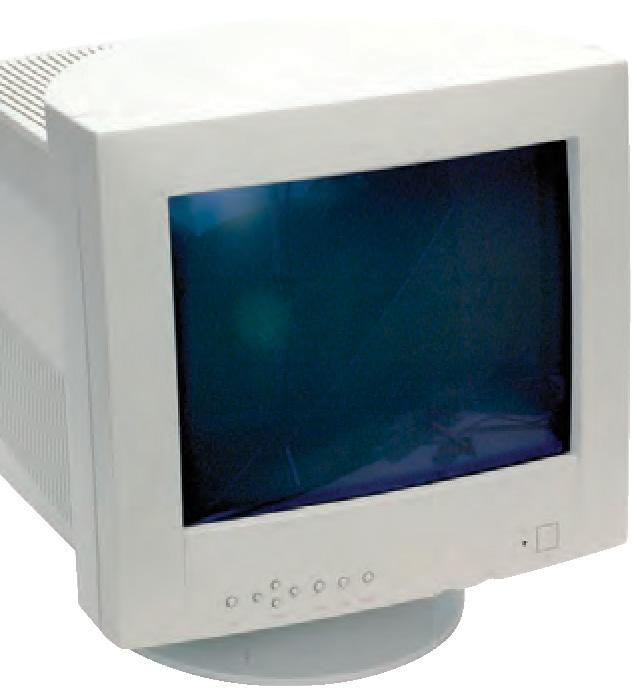

can be overcome with some basic knowledge of the process.
The home improvement experts at HGTV note that turfgrass is divided into two categories: cool-season grass and warm-season grass. A local lawn and garden center can help homeowners identify which type of grass is in the yard, and this often depends on location. Fescue, bluegrass and perennial ryegrass are some examples of cool-season grasses, while Bermuda, bahia, St. Augustine, and zoysia are considered warm-season grasses. Identifying which type of grass is in the lawn is important because that will indicate when to fertilize. Cool-season grasses are typically best fertilized in early spring, while warm-season lawns can benefit from an application just before especially warm temperatures arrive.

A small yard or a thriving lawn with only a few bald or unsightly patches may not need a full application of fertilizer. In such instances, a hand spreader can suffice. For larger lawns and areas, a broadcast spreader is the ideal option.
Spreaders have multiple settings, and the fertilizer package will indicate which setting to use when using the product.


The lawn experts at Pennington® note that a simple soil test can reveal soil pH and phosphorous and potassium levels. Soil tests can be purchased at most home improvement stores and lawn and garden centers, and they can help homeowners determine which fertilizer will most benefit their lawns.

The experts at Scotts recommend a good watering a few days prior to fertilizing a lawn. Such an approach ensures the soil is ready to accept the fertilizer once it’s applied.

Detailed instructions are typically provided on fertilizer product packaging. Once homeowners have identified and purchased the product they need, they can simply follow the instructions on the packaging, including how and when to water after application, which can make fertilizing less intimidating.


– Courtesy of Metro Creative






As any homeowner knows, renovation projects tend to cost a lot of money. The average cost of a home renovation is difficult to gauge, as such endeavors run the gamut from complex projects like a kitchen overhaul to simpler ones like painting a room inside a home. Indeed, the National Association of the Remodeling Industry notes that scope determines the cost of a renovation project.


Though there might not be an “average cost” of a renovation project, homeowners can expect to spend thousands of dollars on projects that are not very small in scale. Navigating such an expense at a time when inflation remains high might be difficult for some homeowners looking to maintain the appearance of their home exteriors. However, there are many budgetfriendly ways homeowners can tend to the exterior of their properties.








Power washing won’t break the bank but it can revive the look of a home.



Power washing removes dirt and grime from the siding of a home, and a power washing can be used to clean porches, walkways and patios as well. Hardware store chains like Home Depot and Lowe’s typically rent power washers, but homeowners who don’t want to do it themselves can hire a professional for a few hundred dollars or less. Power washing after winter can be a good idea because the elements can take a toll on a home’s exterior. A good power washing before spring and summer entertaining season can, thus, give a home a fresh, clean look without breaking the bank.
A furnished front porch can serve as a welcome sign to neighbors and provide a great place to relax with a morning cup of coffee and a good book. Homeowners with a small porch won’t need to bust their budgets to upgrade their front porch furnishings. Some small chairs with bright cushions, a small table and a rug underfoot can revamp an entryway at low cost.

Installing window box planters is another cost-effective way to brighten up a home’s exterior. Homeowners can hang window boxes outside windows

on the front of their homes and then fill them with brightly colored flowers to add an inviting pop of color to their home exteriors. The experts at Better Homes & Gardens recommend that homeowners consider weight before buying window planters. Keep in mind that soil and developed plants can be heavy, so look for a sturdy box as well as one that has drainage holes.

Another simple way to freshen up a stale exterior is to replace hardware. Door knobs, knockers, house numbers, and even the mailbox can appear dated after a while. Replacing these items is inexpensive and quick but can have a profound impact on how the exterior of a home appears to residents and visitors.

Exterior renovations need not break the bank. Various simple and inexpensive tweaks can quickly revitalize the exterior of





Introducing chemicals or pollution into the environment can compromise an ecosystem. However, seemingly harmless non-native plants and animals can do an equal share of damage as well. Many people might be surprised to learn that invasive species can cause turmoil in the environment, even contributing to the destruction of certain ecosystems. Certain invaders are more virulent than others.
Non-native species of animals and plants are like enemy marauders. They may look like the other wildlife around, but they do not quite meld with the environment. When the ecosystem is not equipped to handle a non-native species, these species can quickly consume all of the resources and multiply so quickly that they effectively obliterate the native species.

Many non-native species of plants and animals become problematic when they are put into an environ ment inadvertently, such as when they hitch a ride on other items. Plant life may be brought home from a vacation abroad, or new animals can be introduced to the environ ment if they escape as pets. Shipping vessels can bring back microscopic sea creatures, and insects have been known to hitchhike on various modes of travel. Although efforts are made
to prevent new species from invading an area, it’s impossible to catch everything. Because these plants and animals likely have no natural predators in their new surroundings, they can reproduce much faster and take over. The following are just a few of the globally invasive plants and animals that can threaten local ecosystems.




Spring and summertime outings have changed thanks to this highly invasive mosquito. Its distinctive black and white stripe pattern helps the Asian tiger mosquito stand out from others. Native to tropical and subtropical areas of Southeast Asia, scientists believe it has quickly become one of the planet’s most widely-distributed animal species, spreading to at least 28 countries in a matter of 20 years. It’s believed these mosquitoes hitch rides on imported



There are many different species of carp, which are native to Russia and China. Large fish with voracious appetites, carp take food right out of the mouths of native fish. These fish also stir up sediment in lakes and riverbeds, changing clear water to murky water, thus pushing out some species that can no longer survive.

These tropical snakes have been introduced into many warm areas, including Florida. Many were taken as pets only to outgrow their indoor habitats. They can live in the water and climb trees. With their massive size (20 feet in length), the pythons have few pred-

Non-native plants and animals can destroy environments, and men and women must always be careful when dealing with such species. This is a field of kudzu.
ators and require a lot of prey. Florida wildlife experts estimate 30,000 Burmese pythons reside in Everglades National Park alone. They even feast on alligators.
Sometimes referred to as Koster’s Curse, this is a perennial shrub that is highly invasive in many tropical regions of the world. Originally from Mexico and the Caribbean, soapbush was introduced to Hawaii in the 1940s and quickly began taking over.
This vine is native to Japan and can grow upward of a foot per day in the right conditions. It was brought to the United States to help prevent soil erosion and has never left. Since its introduction, Kudzu has been spread-
ing across the United States at a rate as fast as 150,000 acres annually, according to environmentalists.


Cane toads were introduced to many countries with warm climates as a method of naturally controlling crop pests. However, the toads’ own defense mechanism of secreting toxins makes them deadly to predators outside of their normal habitats. Therefore, there’s nothing to keep these cane toads in check, and they have wreaked havoc on native animal and plant species, especially in Australia.
Another invasive insect, the beetle does most of its damage in the larval stage. This is when it burrows through and feeds on tree wood beneath the bark. In large concentrations, the larvae can destroy a tree. The
University of Vermont Entomology Research Laboratory says the beetle is infesting trees in Ohio, Massachusetts and New York. Trees must be removed, chipped and burned to destroy the invader.

– Courtesy of Metro Creative











Since 1997, Michael Amthor, owner of East County Family Law Group, has offered experienced, compassionate and realistic counsel for family law, divorce, estate planning and probate and trust administration issues. The firm offers both legal representation and paralegal services to accommodate all budgets,


with each staff member having more than 20 years of experience.

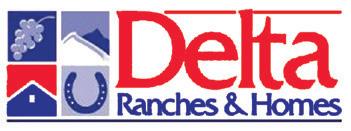




All staff has personally gone through divorce or custody issues, so they have experience no other firm can provide. This enables them to offer a unique level of empathy and an accurate view of what it takes

to handle a difficult divorce. A closely bonded group of professionals, they have offer a wide range of high-quality services to the residents of East County and beyond.
East County Family Law Group is located at 1181 Central Blvd., Suite A, in Brentwood. For more information, call 925-516-4888
State License Board.













